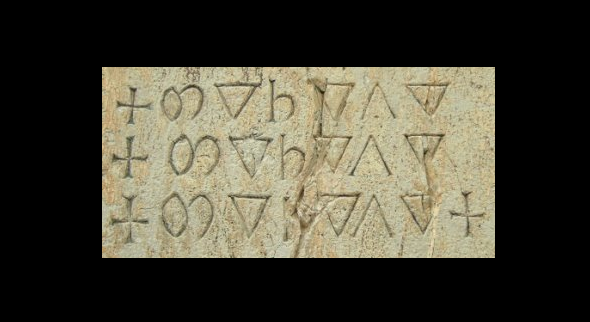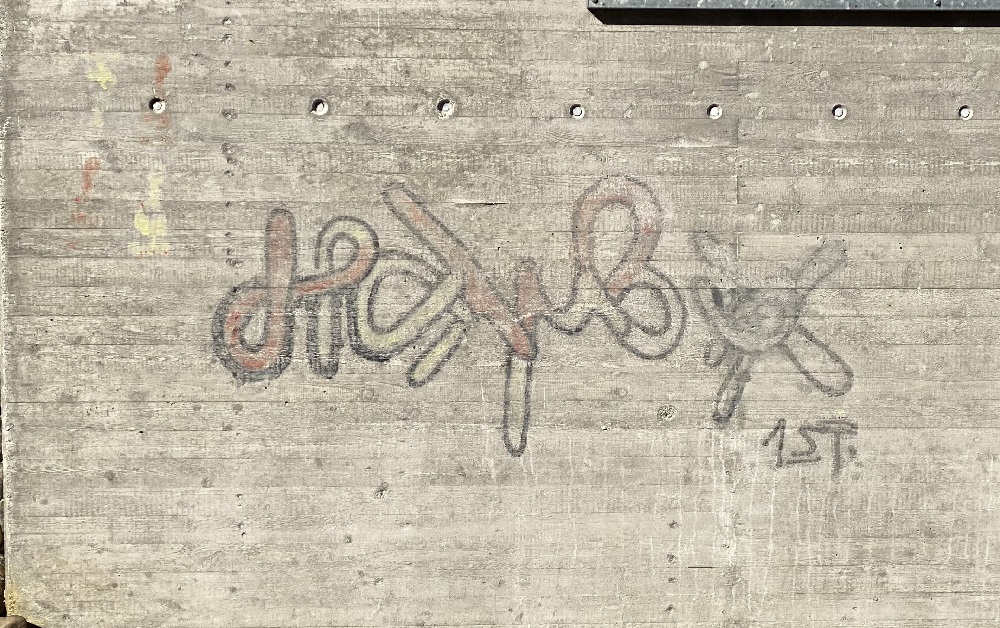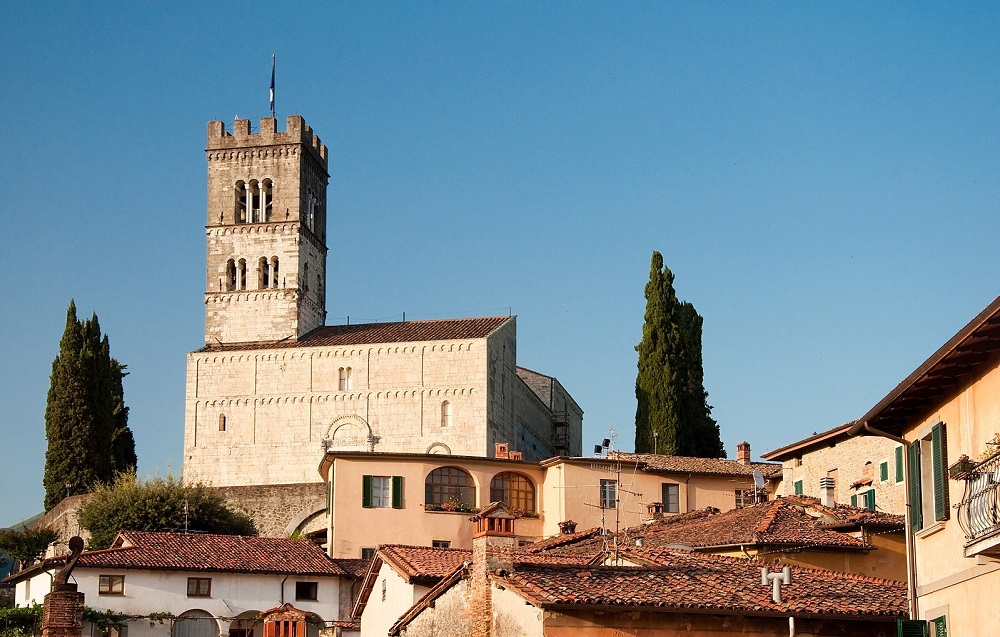An der Außenwand der Kathedrale von Barga in Italien befindet sich eine verschlüsselte Inschrift. Deren Bedeutung ist nicht bekannt.
English version (translated with DeepL)
Heute geht es um mehrere verschlüsselte Inschriften, die meines Wissens in der Krypto-Literatur bisher nicht beschrieben wurden.
Die Graffiti-Inschrift
Eine der Inschriften habe ich selbst entdeckt, und zwar an einem Wasserreservoir zwischen Wellendingen und Rotteil in Baden-Württemberg. Dieses Gebäude, das mitten im Wald liegt, ist mit einem Zaun und vergitterten Fenstern gesichert – schließlich ist die Trinkwasser-Versorgung eine wichtige Sache, die es auch vor Terroristen zu schützen gilt. Vermutlich aus diesem Grund ist diese Einrichtung auf Google Maps nicht gelistet.
Trotz dieser Sicherheitsvorkehrungen muss es jemandem gelungen sein, über den Zaun zu klettern, denn an der Wand des Reservoirs ist folgendes Graffiti zu erkennen:
Leider ist mir die Bedeutung völlig unklar. Kann ein Leser dieses Wort entziffern?
Der Astronaut von Casar
Auf eine weitere rästselhafte Inschrift hat mich dankenswerterweise Cipherbrain-Leser Richard Santa-Coloma aufmerksam gemacht. Sie befindet sich auf einer Steinplatte, auf der der so genannt “Astronaut von Casar” abgebildet ist. Diese Platte wiederum ist in einem Museum in der westspanischen Stadt Caceres ausgestellt.
Leider kann ich aus urheberrechtlichen Gründen an dieser Stelle kein Bild von der besagten Inschrift zeigen. Hier gibt es eines. Außerdem gibt der verlinkte Artikel einige Hintergrundinformationen zum Thema. Dass es sich bei der abgebildeten Person tatsächlich um einen Astronauten handelt, halte ich eher für unwahrscheinlich.
Etwas wahrscheinlicher erscheint es dagegen, dass man die Inschrift auf der Platte entschlüsseln kann – auch wenn dies bisher wohl niemandem gelungen ist. Die Schrift ist reichlich verwittert, und es ist noch nicht einmal klar, ob es sich überhaupt um eingemeißelte Buchstaben handelt. Es ist auch möglich, dass man es hier mit zufälligen Einkerbungen zu tun hat, die lediglich wie eine Inschrift aussehen. Vielleicht fällt einem Leser mehr dazu ein.
Die Inschrift von Barga
Kommen wir nun zum eigentlichen Thema dieses Artikels. Dazu begeben wir uns nach Barga, einer Kleinstadt in der Toskana (Italien).
In Barga steht eine Kathedrale, an deren Außenmauerman folgende Inschrift lesen kann:
Diese Inschrift ist leicht zu transkribieren:
ABCDCEC
ABCDCEC
ABCDCECA
Die drei Zeilen sind also identisch, außer dass die letzte einen zusätzlichen Buchstaben enthält. Auffällig ist, dass das mit C transkribierte Symbol gleich dreimal pro Zeile auftaucht.
Ich kannte diese Inschrift bis vor Kurzem nicht und habe sie erst vor ein paar Tagen per Google gefunden. Natürlich habe ich sie in meinen (von Cipherbrain-Leser Christian Baumann programmierten) “Cryptologic Travel Guide” aufgenommen. Anscheinend ist die Bedeutung der drei Zeilen nicht bekannt. Der oben verlinkte Artikel sagt zwar, dass sich schon viele mit diesem Rätsel beschäftigt haben, doch allzu viele Hypothesen oder Spekulationen konnte ich bisher nicht finden – was dieses Kryptogramm beispielsweise von der Shugborough-Inschrift unterscheidet.
Meine erste Vermutung ist, dass es sich hier um einen lateinischen Begriff handelt, der wiederholt wird. Spontan fallen mit dazu SANCTUS, SANCTUS, SANCTUS oder MEA CULPA, MEA CULPA, MEA MAXIMA CULPA ein. Kennt ein Leser ähnliche Ausdrücke? Im Idealfall einen, der auf das Buchstabenmuster passt?
Es gibt natürlich zahlreiche andere mögliche Erklärungen für dieses Kryptogramm. Doch warum sind die drei Zeilen nahezu identisch? Ich hoffe, meine Leser finden die eine oder andere Hypothese.
Follow @KlausSchmeh
Further reading: Wer löst die Inschrift auf dem Kryptologen-Denkmal?
Linkedin: https://www.linkedin.com/groups/13501820
Facebook: https://www.facebook.com/groups/763282653806483/







Kommentare (16)